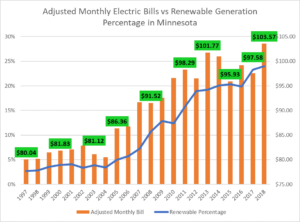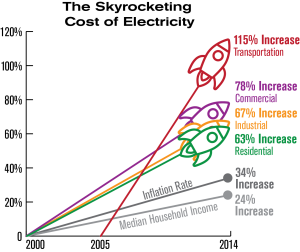The current realities of today can’t be questioned. The entrance of environmentally friendly power and all the more as of late, energy capacity has expanded throughout the most recent ten years in essentially every significant economy in the world. Further, these assets are progressively being conveyed in a dispersed style, upsetting the customary “top-down” construction of the power area. The Power to Choose Alternative is not in everyone’s hands. A variety of new specialists including those customarily depicted exclusively as “request,” aggregators, and other new energy arrangements suppliers are currently providing administrations to energy, limit, and subordinate administrations markets, empowered by the arrangement of more reasonable and omnipresent ICTs. These equivalent ICTs are helping and empowering administrative change and progressively dynamic organization of the board while making new worries about the security of the power framework.
What are the alternatives that can use?

Regardless, discontinuous renewables, stockpiling, and dynamic requests address just a little part of the worldwide asset blend. Without a doubt, notwithstanding long stretches of great development, barring huge hydroelectric assets, renewables still meet just 2.8 percent of worldwide energy interest (BP 2016) furthermore, 6.7 percent of power creation. If the framework was to quit evolving today, the realities framed previously might be overlooked as minor. Regardless, numerous scholastics, industry experts, utilities, new adventures, and other framework partners trust that these realities signal the start of a more significant disturbance of the power area. For instance, Bloomberg New Energy Finance (BNEF) predicts that worldwide petroleum derivative use for electric power age will top in 2025-short of what multi-decade away-and decline unyieldingly from that point (BNEF 2016). Inexhaustible assets and energy stockpiling are the guilty parties in this normal decay. In case we disregard the changing nature of interest, BNEF predicts that electric vehicles could represent as much as 25% of new light-obligation vehicle deals in the United States by 2030 (Liebreich 2016).
Concentrate on the power area
Navigant Research predicts that by the finish of these ten years, more conveyed power age limit will be added than the unified power age limit (Trabish 2016b). As we will talk about in the rest of this report, assuming these patterns emerge, they will drastically affect the construction and activities of the power area. This assessment isn’t shared exclusively by industry investigators. Audrey Zibelman, the seat of the New York State Branch of Public Service-the power administrative body for the United States’ third generally crowded state-as of late expressed: “Roof sun oriented, energy capacity (from family batteries to electric vehicles), savvy energy the executive’s innovation, and the total of interest are generally regions were requested, as opposed to age, can turn into the state’s essential energy asset” (Zibelman 2016). In one of the records of the “Energy Union Package” characterizing the European Association’s power technique over the approaching ten years, That’s what the European Commission expresses, to achieve the European Union’s energy objectives, the European Association must “create some distance from an economy driven by petroleum products, an economy where energy depends on a unified, supply-side methodology and which depends on old advancements and obsolete plans of action” (European Commission 2015). These are simply tests of the key strategy creators and strategy-making bodies anticipating a more sustainable and disseminated future-a future wherein request side assets and energy “buyers” play a functioning job in the speculations and activities of the power area.

